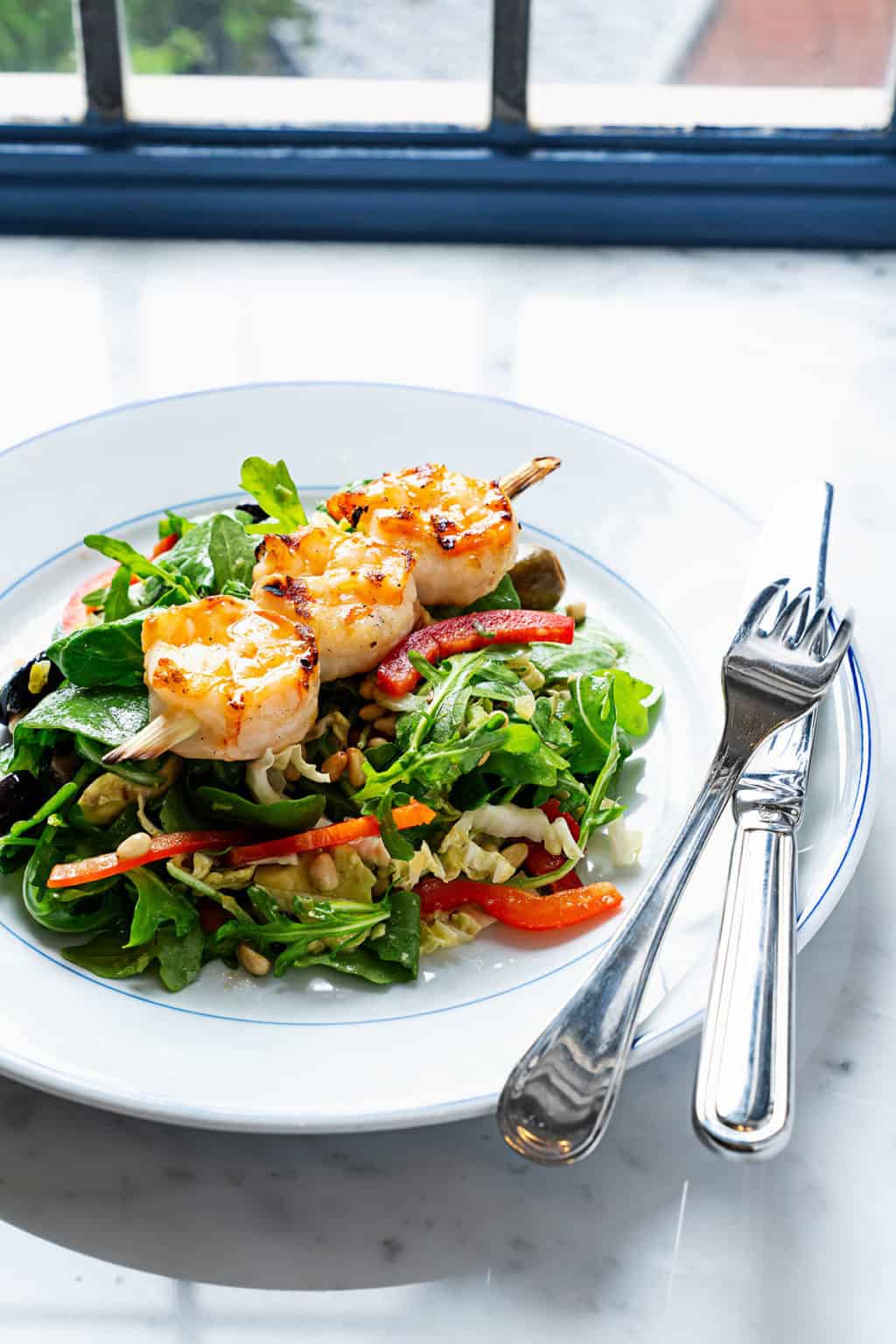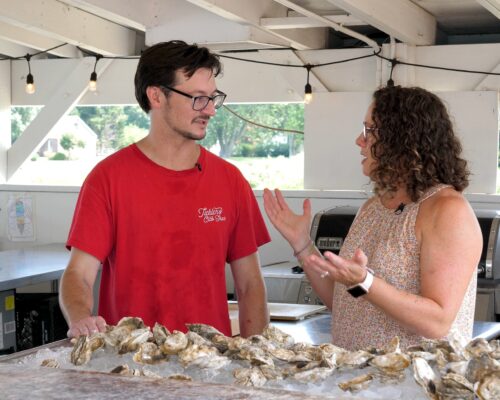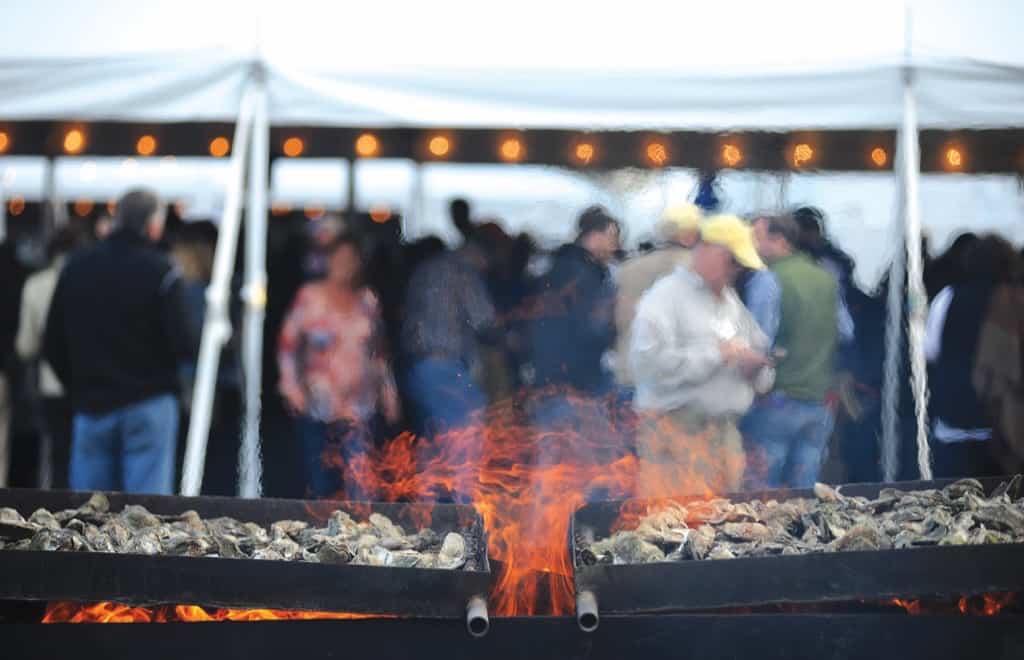Chesapeake chefs take farm-to-table to new level with committed collaborations.
Chef Bryan Byrd is familiar with the concept of farm-to-table dining, but more recently he’s digging deeper by going straight to the root of farming. His restaurant, Dredge—which gets its name from a method of oystering—has always had a seafood-focused menu; after all, it is located in Irvington, Va., near the confluence of the Rappahannock River and the Chesapeake Bay, a place well known for its bounty of bivalves.
“Basically, it was a menu heavy on the boat, but more recently, I’ve connected to the region’s community of farmers, which also makes this place such a unique place to eat.”
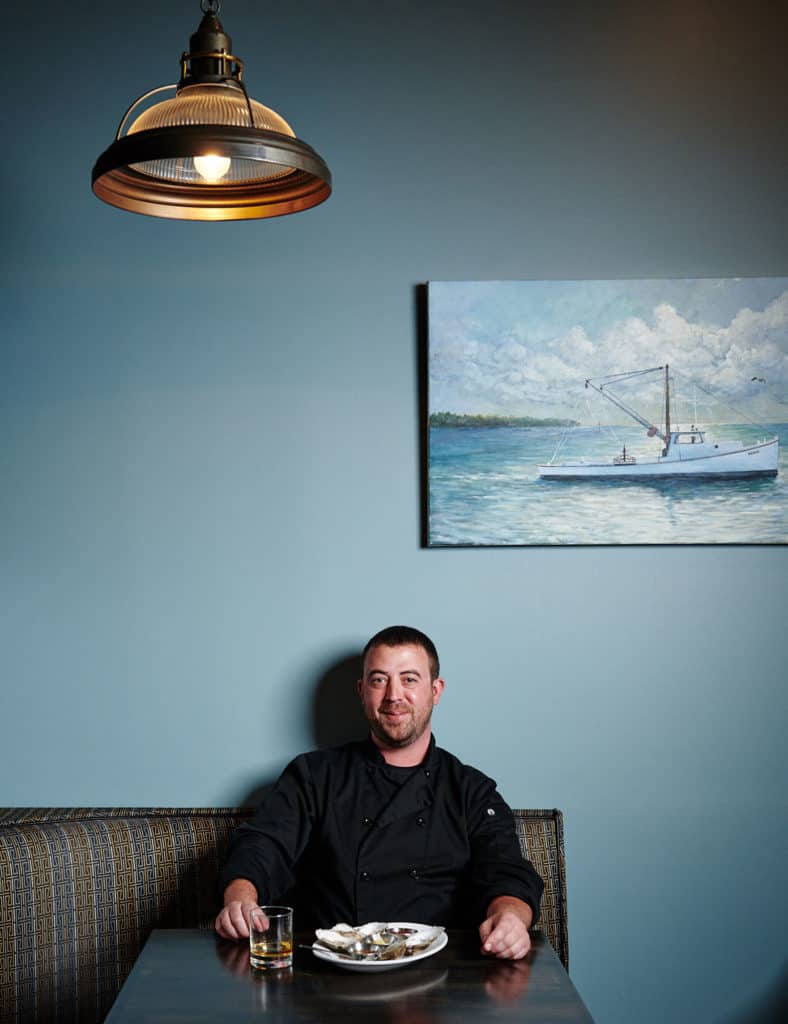
Photo Credit: Fred & Elliott photos
Byrd’s family roots helped connect him to the region’s independent farmers. His sister and brother-in-law, Kasey and Russell Haynie, are first-generation farmers who own and operate Black Sheep Farm in Lively, Va. What started out as hobby farming quickly turned into a larger project, with the couple raising sheep, cows, and pigs, plus seasonal produce, and giving Byrd first dibs on fresh ingredients.
“Having the farm was a huge step forward for us [last] year. It gave us access to produce in a period of time when it was really hard to get it otherwise, during COVID-19,” Byrd says. “Many food supply chains were being disrupted while we were pulling fresh tomatoes, cucumbers, zucchini, squash, and peppers. We got through summer despite the pandemic.”
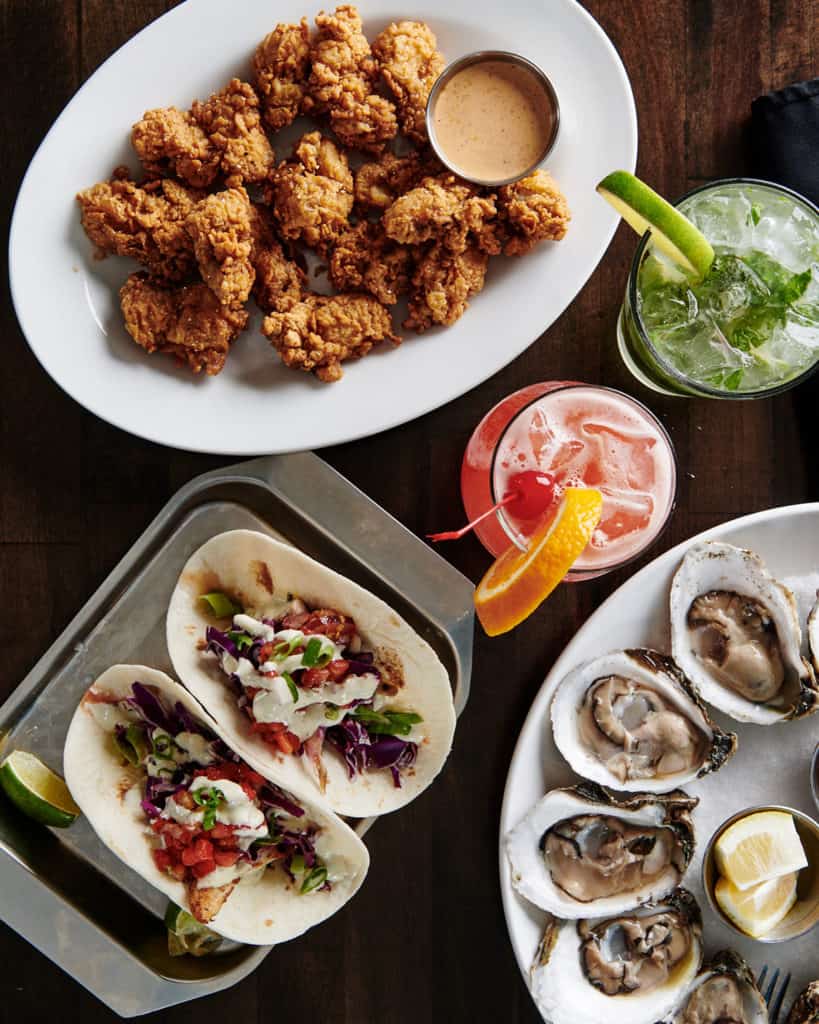
Byrd also believes that by supporting local farms, his restaurant can supply ingredients that promote the environmental sustainability of the Chesapeake Bay watershed.
“With our connection to farms and the water, we’re marrying the terroir—the flavors of the land—with the merroir—the flavors of the water,” Byrd says. “Sustainable farming practices not only deliver the freshest and highest-quality ingredients, but these practices also help keep the Bay cleaner.”
Byrd thinks any restaurant, big or small, can take the lead on a farm program that makes it easier to sustainably grow food; instead of farm-to-table, he calls it a “root-to-table” approach for restaurant food sourcing.
A Farm Partnership on the Eastern Shore
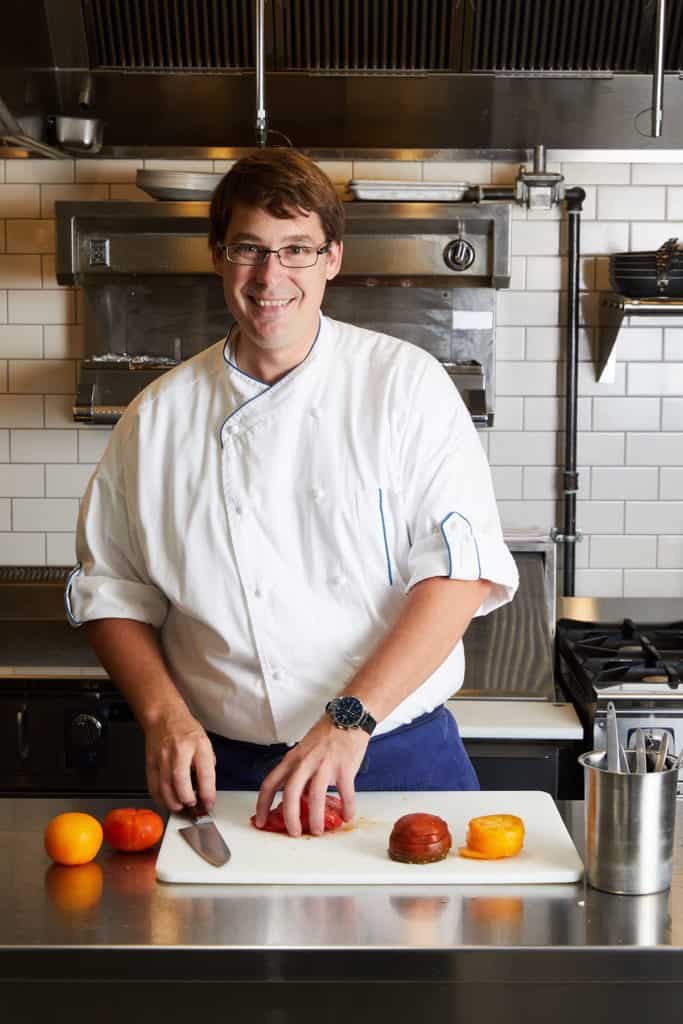
Meanwhile, 178 miles away in Easton, Md., another chef-farm partnership is helping deliver quality ingredients for both everyday and special-occasion eating.
Harley Peet is the executive chef at Bluepoint Hospitality, which runs several kitchens in Easton, including Bas Rouge, an upscale contemporary Viennese restaurant, and Sunflowers & Greens, an accessible fast-casual concept with a bistro vibe, featuring a menu that changes with the seasons.
Peet thinks any small restaurant group can strike up a flexible partnership with a local farm.
By working directly with Dogwood Farm in nearby Sherwood, Md., he’s found a way to source free-range brown eggs, custom grown greens and sweet corn, and a space to plant a dedicated summertime garden of vegetables, squash, and beans. He’s also preserving and using some of the ingredients to last him through the winter months, such as the vanilla-glazed turnips and blackberry gastrique he pairs with duck breast at Bas Rouge. The produce comes from Doug and Lisa Raymond’s farm, which also produces more than 15 varieties of heirloom tomatoes.
Of course, a constant supply of produce is not always a guarantee with small, independently owned farms, and that’s okay. Peet looks at the changing growing seasons as a creative challenge. “Constant supply, as with any small, independently operated food grower or harvester, can mean quantities are limited and not always available when needed,” he says. “Just because you ‘ordered something’ doesn’t mean it will show up in the amount you wanted. You need to be very flexible, and work creatively with changes to availability and amounts.”
A Baltimore Restaurant Group Gets Its Hands Dirty
Flexibility is also key for Atlas Farm Manager Larson Weinstein, who runs a five-acre working farm in Finksburg, Md., for Baltimore’s Atlas Restaurant Group. Not many restaurants literally “buy the farm,” Weinstein admits, and it was an investment put to the test in its first growing season.
Atlas Farm began operations in early March, just before the pandemic, and while that might have seemed risky, it turned out to be an essential resource for the Baltimore community, serving as a food safety net for the restaurant industry as it faced temporary shutdowns and dining restrictions in the early spring and late winter.
“Our first crops of the spring were radishes and carrots, and we were completely shut down at that point, so we started doing an industry-wide grocery giveaway for any restaurant employees in Baltimore,” Weinstein says. “This farm also has become a lifeline and morale booster for the restaurant community. I’ve had dishwashers and line cooks come to work here for a few days, and it gives them something to do with their hands as we all navigate the pandemic.”
Atlas Restaurant Group has several restaurants and bar concepts, from the very swanky digs at The Bygone, a 1920s-style grill serving contemporary American and French cuisine at the top of the Four Seasons Baltimore hotel, to some very come-as-you-are bars and restaurants, like nautical-themed spots The Admiral’s Cup and The Choptank, both in Fells Point. Each place has been impacted by the pandemic, but Weinstein believes it’s the farm’s ability to save on food costs and resources that will see them to the other side. He thinks a restaurant-farming model adds equity and access to farm-to-table dining, too.
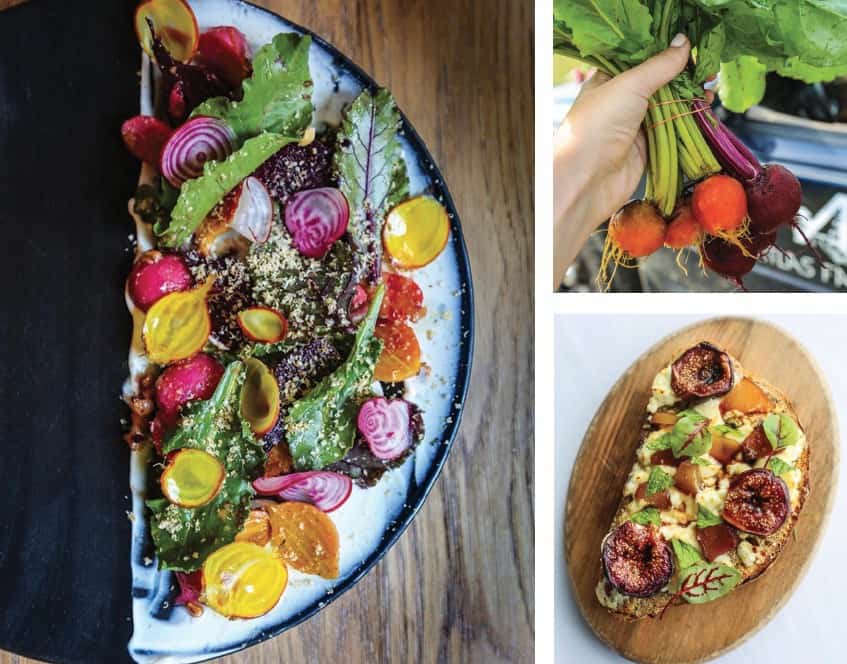
“Farm-to-table shouldn’t be for just some. My hope is that it will be for all,” Weinstein says. “And for people like me—a first-generation farmer, who wanted to farm but couldn’t afford to buy the land—this model of a restaurant managing a farm is a viable path forward.”
There’s also the sustainability factor that make this a winning model. Since the farm is located about an hour from Baltimore, it means fewer carbon emissions to transport a strawberry that might typically come from California or Mexico. Small-scale farming also helps move away from industrial farming practices that require intensive amounts of fertilizer or manure, which frequently end up as runoff in the Bay.
“Every acre of land we can take out of Big Ag and put into the hands of regenerative and sustainable agriculture is better for the Bay,” Weinstein says. “I grew up in Maryland, and in the ’90s the Bay looked a lot worse. We’re seeing the success of regulations and farming practices that limit runoff and improve the Bay’s water quality.”
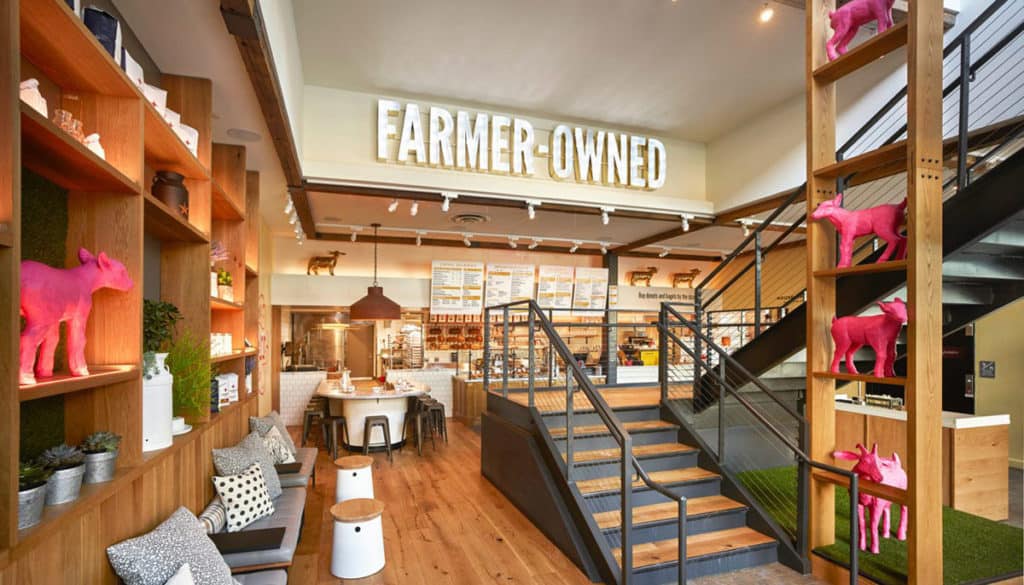
Giving Farmers A Larger Share of The Plate
Restaurants also have the power to guide food and environmental policy decisions. Founding Farmers in Washington, D.C., is a restaurant of many firsts to lead the way.
When the dining concept first opened in 2008 at the corner of Pennsylvania Avenue and 20th Street, in Northwest D.C., it was the first LEED-certified restaurant in the city. The business model was also an experiment to support family farmers, launched by restaurateurs Dan Simons and Michael Vucurevich, who partnered with Mark Watne, farmer and president of the North Dakota Farmers Union.
The idea was always to source produce from family farms and ship it on trucks (also owned by farmers) direct to the District. “Today, we source from family farms across the country,” Watne explains. “We run a truck from North Dakota that does pick-ups along the way, and we are part of the National Farmers Union, so we can reach out to their members for more products.”
While Founding Farmers has turned into a mini-restaurant empire in the mid-Atlantic region, with more than a half-dozen restaurants in D.C., Maryland, Virginia, and Pennsylvania, it hasn’t lost touch with its farming roots. “Aside from what comes to us on the truck, we also source a tremendous amount from our region: Virginia, Maryland, and Pennsylvania,” Simons says. “The Chesapeake Bay watershed can provide us so much for the long-term, if we care for the land and the water, and ensure the economics work for the independent family producer.”
Where many family farms lose value is through a complex network of manufacturing, logistics, and shipping, Watne says. By cutting out the middlemen, small-scale farmers see greater returns on every order. “Due to COVID-19, we’ve also pivoted from restaurant operations to offering a full line of more than 750 market and grocery items,” Watne says. “Along the way we try to source as local as possible. We want the farms in the area to have a spot to showcase their products.”
They also look at their D.C. roots and connections to American farmers as a way to transform farm policy nationwide. “Our restaurants exist to support and advocate for the family farmer. We do this through our purchasing decisions, our cooking decisions, and our approach to caring deeply about communities where we have restaurants,” Simons says “The fact is, the independent farmer’s share of the food dollar has been steadily declining for decades. We hope to educate consumers so they ask questions about what they eat, and where they spend, to ensure we’re prioritizing the independent farmers first.”

